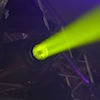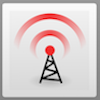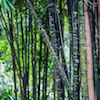Friday Flyer on Monday - November 24, 2025

Spotlight on the Kansas State University QuarkNet Center
The KSU QuarkNet Center remains active on multiple fronts thanks to the leadership of mentor Bharat Ratra and lead teachers Penny Blue and Renee Teague. Several teachers in the center operate cosmic ray detectors and have even collaborated across the state to collect and compare data. The center also hosts a masterclass for students each year and took part in a NOvA masterclass during IMC 2025. Students participating in the masterclass had the opportunity to tour the K-State nuclear reactor facility and explore the JRM Laser Lab as part of the masterclass day.
This past summer, QuarkNet Fellow Nate Unterman co-facilitated a cosmic ray workshop with QuarkNet staff, featuring both Cosmic Watch detectors and the larger QuarkNet cosmic ray detector. During the workshop, teachers worked in research groups to carry out an investigation using at least one detector, collected data, and presented results to each other. The workshop wrapped up with a teacher “share-a-thon” and a productive discussion on classroom implementation. Of course, no KSU QuarkNet gathering would be complete without the delicious homemade pies that Renee brings!

News from QuarkNet Central
Congratulations to the 2025 PhysTEC Teacher of the Year awardees. At least two QuarkNetters made the list, including Jeremy Smith (Johns Hopkins center) and Michael Smith (Brookhaven/Stony Brook center). Way to go!
Update on the Cosmic Ray e-Lab: The Cosmic Ray e-Lab is now back up and running, and detector teams should once again be able to upload data. Please give it a try, and let the QuarkNet staff know if you encounter any issues.
World Wide Data Day (W2D2): A big thank you to all the physicists, teachers, and students who took part in W2D2 2025 last week! Student groups from around the world contributed to the analysis, and many joined one of the several videoconferences held yesterday. We’re grateful for the enthusiasm, collaboration, and hard work that made this year’s event such a success.
Beamline for Schools (BL4S) 2026: Pre-registration is now open for BL4S 2026. Follow this link to learn more about this competition, and to pre-register.
International Masterclasses 2026: Fermilab-based International Masterclasses will be held March 1-28, 2026. Registration is open! We have an online form for Fermilab masterclasses to be filled out by a single organizer of each masterclass. For all the news, go to the latest IMC circular.
Sad News: We share with sadness the passing of William “Bill” Bardeen last week. Bill was a distinguished theoretical physicist at Fermilab and the husband of Marge Bardeen, QuarkNet’s spokesperson and one of the program’s co-PIs. He was widely respected not only for his scientific contributions, but also for his kindness and character. Bill will be deeply missed. Our thoughts and heartfelt support are with Marge and the entire Bardeen family during this difficult time.

Physics Experiment Roundup
The LHC wrapped up its 2025 proton run, delivering 125.4 fb⁻¹ of integrated luminosity to ATLAS and CMS, surpassing its target and breaking last year's record. The LHC will transition to a lead ion run for the remainder of 2025. Turning to the more distant future . . . the CERN Council has completed its review of the feasibility study for the Future Circular Collider (FCC). No “showstoppers” were identified, and the FCC could eventually unlock precision Higgs studies and explore physics well beyond the LHC’s reach.
A global survey of dark matter experiments shows increasing collaboration among underground detectors, colliders, and astrophysical observatories. Though the particles remain elusive, researchers are tightening constraints from multiple fronts. A new analysis combining high energy astrophysical observations with advanced statistical modeling shows that the speed of light remains constant to unprecedented accuracy, placing even tighter limits on possible Lorentz invariance violations.
New results from Jefferson Lab highlight how more than 98% of visible mass arises not from the Higgs field but from the dynamic interactions of quarks and gluons. The study strengthens our understanding of hadron structure and the mechanisms behind mass generation. The DOE has awarded $125 million to Fermilab’s SQMS Center to advance breakthroughs in quantum information science. The initiative aims to accelerate progress toward scalable quantum information systems.
The JUNO neutrino experiment began taking data in August and, within just 59 days, achieved world-leading precision on key oscillation parameters. These early results show JUNO is on track to determine the neutrino mass ordering and search for new physics in the years ahead.

Resources
If you're looking for quantum-related activities that are designed to fit into a 45-60 minute class period, check out the collection of QuanTime activities from the NSF-supported Q2Work program. The Perimeter Institute offers a selection of courses for teachers, including an upcoming asynchronous course on special relativity.
Next, we highlight a few videos, including one from the ICARUS experiment at Fermilab, now marking five years of continuous data collection, advancing the Short-Baseline Neutrino Program’s search for physics beyond the Standard Model, and helping inform the future of projects like the Deep Underground Neutrino Experiment. MinutePhysics has one on "ghost rainbows," and one from popular science YouTuber Mark Rober, "Jumping On a Moving Train...For Science!"
The next AAPT Virtual Coffee Hour takes place at 7:30 pm EST on December 9 on "Using Generative AI Productively for Teaching and Learning."

Just for Fun
The Thanksgiving holiday in the U.S. is this Thursday (November 27). We begin the "fun" today with a look back at some Thanksgiving-related links from the FF archives: The Physics of the Macy's Thanksgiving Day Parade Balloons from Wired, Thanksgiving Chemistry from Bytesize Science, 10 Thanksgiving Experiments from Raising da Vinci, and Turkey Races from STEAM Powered Family. Science brings us How To Science Up Your Thanksgiving Dinner.
Quantum Insider on why we should give "ThanQs" for quantum mechanics.
From xkcd: "Beam Dump."
We leave you with a picture from a recent showing of the aurora borealis. We at QuarkNet wish everyone a very Happy Thanksgiving!
QuarkNet Staff
Mark Adams: markadams74@gmail.com
Ken Cecire: kcecire@nd.edu
Spencer Pasero: spasero@fnal.gov
Shane Wood: swood5@nd.edu
